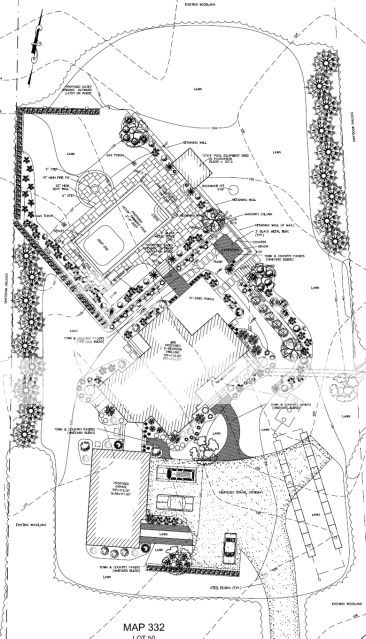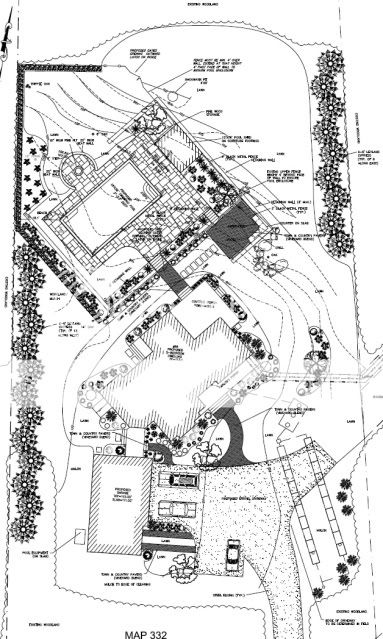Landscape Architecture for Landscape Architects › Forums › PROFESSIONAL PRACTICE › hourly rate for small side jobs
- This topic has 1 reply, 18 voices, and was last updated 13 years, 3 months ago by
 Rick Spalenka.
Rick Spalenka.
-
AuthorPosts
-
July 18, 2010 at 10:48 pm #169095
 Jonathan Smith, RLAParticipant
Jonathan Smith, RLAParticipantI’m a designer in Moscow, Idaho. I charge $55 an hour for design work and have been working at this rate for long enough that I’m able to estimate how much time each stage of design will take. A couple pointers: make sure you charge for meeting time and driving. If your clients know you will be charging them by the hour for meetings and to get to their residence, they will tend to be more prepared for meetings and won’t waste your time. Also, break down the stages of design work, eg, site analysis, concept development, design development, working drawings, meetings, etc. and estimate how much time you will use for each stage. It may be helpful to add that the number you give them is an estimate and that do not charge for hours not used during the design work but that, since design is often very collaborative (between client and designer) that your estimate may be exceeded and that you will notify them before any overages are incurred.
Here’s a copy of a recent contract for residential design work:
Mosaic Land Design, LLC.
132 Styner Ave.
Moscow, ID 83843
Phone: 208-562-7324RE: property owners.
Mr. and Mrs.,
Thank you for the opportunity to present you with this proposal for landscape design service for your property atMy proposal is as follows:
1.0 Scope of Work
The scope of work for this project is the design of the exterior of your residence.
2.0 Stages of Work
The stages of work encompass schematic design, design development, working drawings (if requested), and specification drawings (if requested). The stages of the work I propose are as follows:
1. Preparation of three distinct concept landscape plans, showing hard and soft landscape complete with sufficient information to explain the general form, content and quality of the proposal.
2. Preparation of a scaled design development plan, showing hard and soft landscape complete with sections or elevations where necessary. These drawings will establish the basis for commencing with the preparation of working drawings and technical considerations.
3. Preparation of working drawings for hard and soft landscape works at grade sufficient for tendering and construction.
4. Preparation of an approximate cost estimate of the landscape works to be carried out at the schematic and design development stages.
5. Attendance at relevant meetings for a total of 4 hours.
3.0 Hard Landscape Works
For the purpose of this proposal, “hard landscape works” means:
1. Design, selection and specification of paving materials, excluding structural bases for vehicular surfaces.
2. Layout of landscape walls, fences, screens and other landscape structures.
3. Selection and layout of landscape light fittings. Electrical supply system and any required photometric studies is to be carried out by your electrical engineer.
4. Design and specification of the irrigation system.
5. Conceptual design and layout of water features, if any, excluding the design of related mechanical systems.
6. Layout and specification of drainage fittings for at-grade hard paved and planted landscape areas. Our responsibility would be limited to the selection and placement of fittings. Underground pipe work and off-site connections are to be the responsibility of your civil and/or mechanical engineer. Drainage on roof structures is to be the responsibility of your architect or engineer.
4.0 Soft Landscape Works
For the purposes of this proposal, “soft landscape works” means:
Design, selection and specification of all plant materials.5.0 Deposit and Fees
Before I progress with this project I require a 50% deposit on the estimated cost of this service. The hourly rate for my services is $55 per hour.
I estimate each stage of the design process to take the following period of time:
Schematic design: 10 hours
Design development: 14 hours
Material Estimate 4 hours
Meetings 4 hoursTotal hours: 32 hrs. @ $55/hr.
Total Estimated fees: $ 1760
6.0 Stipulations
The client will not be billed for hours that remain unused at the culmination of the design stage of this project, however, the above figure is an estimate and we reserve the right, if necessary, to bill additional hours above the estimated time provided in this contract. The client will be notified of such overages prior to the event of the overages.
7.0 Acceptance of Proposal
The above prices, specifications and conditions are satisfactory and hereby accepted.
Signature of Client
Hope that helps.
August 25, 2010 at 4:23 pm #169094William Sinclair
ParticipantThanks for sharing, Jonathan. I’ve had people call rates of $45-50 “outrageous” up here in Spokane, but I know several people charging over double that here.
August 25, 2010 at 5:06 pm #169093William Sinclair
ParticipantI agree, Andrew. It’s a much different animal if the contract work is one’s main source of income. I’ve just been creating spreadsheets projecting billable hours needed over the course of a year, 2yrs, 3yrs… and it gets pretty tricky… something like 20 billable hrs @ $85/hr (or $1700/wk before taxes and expenses – and saving for annual expenses – in a home office) is neccesary from week to week in order to make a sustainable family wage.
Of course there are many variables… location, family size, standard of living, etc, etc…
August 26, 2010 at 1:23 am #169092 BeccaBParticipant
BeccaBParticipantThat does help. Thank you much!
January 25, 2011 at 10:47 pm #169091 KimberlyParticipant
KimberlyParticipantWow, that is so helpful. Thank you!
January 27, 2011 at 1:47 am #169090 Jonathan Smith, RLAParticipant
Jonathan Smith, RLAParticipantI don’t know…I think 40 is low for design sevices no matter where you practice or how new you are. Unless you’re working a day job, you have an infinite number of clients or you’re doing your own installs, it’ll be hard to make a living. Plus, if you charge a low rate, that’s what people will come to expect…
January 27, 2011 at 12:52 pm #169089mark foster
ParticipantGood point Jonothon. There is a certain psychology involved when establishing worth, even with side jobs.
Do you want clients to think that your time is expensive and you are worth every penny, or that you are a great deal and cheap? And what do you want them to say when they recomend you to others?
If you prefer to be thought of as expensive and worth it (which I suggest), you charge a higher hourly figure. If you feel like cutting them a deal you can always lower the number of hours.
I also suggest presenting the price in an hourly method (it will take 6 hours @ $100 = $ 600 total) instead of quoting a flat fee, because you want the client to be aware of your time. A flat fee suggests you are “theirs” until they are “completely satisified” (whatever that means), and some clients will take advantage of it.
January 27, 2011 at 6:18 pm #169088 Andrew Garulay, RLAParticipant
Andrew Garulay, RLAParticipantWe have two things that are working in opposite directions. That is a flat price to make a sale and an hourly rate that you need to meet which can scare people off. It scares them that it will cost too much if the hours rack up. It also scares then if you tell them you are only going to put a small amount of time into their project. You have to give them and yourself the best of both worlds.
The trick that I use is to get the hourly rate to support my flat rate contract. I present a thorough description of what I will do (# of meetings, revisions, how many sheets, drawing scale, ….) and then bind it with an hourly rate of $100 for additional work beyond what is described. I make the sale, average $1,500 per design, and the client makes darn sure I get all the info that I need from them so that I can get it done within the contract in order to avoid extra charges. The best thing is that I don’t get people looking to play HGTV’s Ddesigner’s Challenge with me and make me do three different concepts. It forces efficiency from the client and any of you who do this know that the biggest killer of profit is the client who won’t let you finish the job and milks your time to death. I’m telling you, this works if you have a solid contract and give them confidence that you know what they want and you know what you are doing.
They see what I’ll do for $1,500 and know that it will take me longer than 15 hours to do it, so it feels like a good deal (which it is). Then they want to sign the contract and off we go.
January 27, 2011 at 7:42 pm #169087 ncaParticipant
ncaParticipantThanks for sharing that, seems like a great approach.
January 27, 2011 at 11:11 pm #169086mark foster
ParticipantThanks Andrew–last entry nailed it.
April 14, 2011 at 11:52 pm #169085 Thomas J. JohnsonParticipant
Thomas J. JohnsonParticipantI have a difficult time with pricing also. A basic planting plan is a no brainer but if you want something special, it takes time. Same thing for hard scape and site amenities. Plop and drop from a catalog vs. custom is a huge difference in time and skill.
April 15, 2011 at 2:17 am #169084 Andrew Garulay, RLAParticipant
Andrew Garulay, RLAParticipantI do full site plans including driveways, swimming pools (grading and retaining walls with spot elevations), patios , fencing, …and most anything else that you might find on a residential house lot for under $2k. I don’t provide construction details and specifications with it, but they are all custom designed for the client and site. It will be a b&w line drawing with no elevation drawings, but certainly not cookie cutter design. … that is why I sell 90+% of the jobs I write proposals for.
Hardscapes, retaing, stairs, grading, … is not that much mor complicated than arranging good plantings if you do that kind of thing everyday for a long time. … we are suposed to compete with engineers after all.
Sell first. Adjust your product output (not your design) to minimize your time investment realistic to the selling price that you can actually sell second. Lift your prices to find the point of diminishing returns third. My method is not right for everyone, but the three steps just above are what anyone should do. How you do that will have to be what fits for you. You’ll eat a lot of hours for a while, but you’ll gain productivity through practice and adjusting your output materials to match the project type.
Once you get things going, you can adjust. Without selling you can’t get it going to find out all of those little thresholds of what you can sell, how you can make more money, or how you can cut costs of production.
Inertia of the design professional. A designer in motion stays in motion. A designer at rest stays at rest. Motion is the key to everything. Get it going at any cost – then figure it out.
Engineers Plan: (very poorly sited in my opinion)

First Draft prior to construction of house:
Revised this week after house construction – dug the pool today:
Design fee $1,800 …no extra charges (paid last July when first draft complete – revised this past week w/ no extra charge). … the pool is sunken 3′ from the SE and SW and there is a 4’drop from there to the NE – proposed contours and spots throughout. Its not flashy, but I can sell them, make money, and get referrals more than I have time to do them.
I cut of the plant schedule, notes, and titleblock, but you get the idea.
April 20, 2011 at 11:51 pm #169083 Alan Ray, RLAParticipant
Alan Ray, RLAParticipantI’ve been charging $150./hr. for 5 years now. I’ll go to $200./hr. soon. Some charge up to $250./hr. here in Nashville. I learned over 20 years ago that if you charge a low fee, clients will think you must not be very good. Perception is everything….99% of my work is by referral, which is the best way to get work…when I do get an occasional yellow pages call, I try to qualify them asap as to weather they are serious. This is usually acomplished quickly by discussing fees….if the quibble at all I refer them to someone else…believe me, you do not want to work for these folks…
April 24, 2011 at 2:58 pm #169082Anonymous
InactiveI agree with you 100% Alan. I charged $85/hour back in the mid-nineties in the Cleveland area before I was registered. About 2/3rds of homeowners would say it was too much and about 1/3rd would sign on the dotted line. I’d rather concentrate my efforts on people who want quality design services versus people who are trying to get landscape on the cheap. Seriously if a person can spend $100,000 on their home landscape, they can afford to pay my measly $4,000 design fee.
You’re spot on with the perceived value thing. Typically people who spend real money on their landscape are people who wouldn’t hesitate to spend $10,000 for a pool party or $500 for a pair of jeans with holes in them. Don’t sell yourself short. Someone that would make a fuss about a $700 fee for a planting design does not understand or value what a landscape architect brings to a project. People like this should be qualified out during the initial phone call. I wouldn’t waste one minute trying to negotiate a $700 design fee.
I can say the best thing I learned during my early years in design/build is how to sell. If you feel your first option is to discount your services to get a job, you’ll always be on the losing end. If a potential client hesitates to sign up because of price, you need to go back to building value into what you’re proposing. Never discount your services without getting something else in return. Most importantly, don’t be afraid to walk away from an unreasonable prospect.
April 24, 2011 at 4:58 pm #169081Anonymous
InactiveDid you say $300 for a design job? After I read it I started chopping it up in my head.
- Writing the proposal – 30 minutes
- Drive to site – 15 minutes
- Site reconnaissance/analysis – 30 minutes (it usually takes me at least an hour)
- Set up CAD file and draft base map – 1 hour (on a good day for me)
- Design – 1 hour (is that enough time to question what you’ve drawn?)
- Quick rendering – 15 minutes
- Drive to site to present – 15 minutes
- Present and answer questions – 30 minutes
- Drive back home – 15 minutes
10. Misc. phone calls and emails – 30 minutes
5 hours if everything flows perfectly and your client is easy to work with. Toss in one revision, printing, materials and gasoline I don’t think it’s worth it. With a difficult client you could easily be working for nothing. If it’s about getting experience, you (and the profession) would be better off if you did work pro bono for a non-profit organization.
You have a BLA and you or somebody paid for it. You’re worth more than you realize. You can go make $10 an hour at Wendy’s.
-
AuthorPosts
- You must be logged in to reply to this topic.



